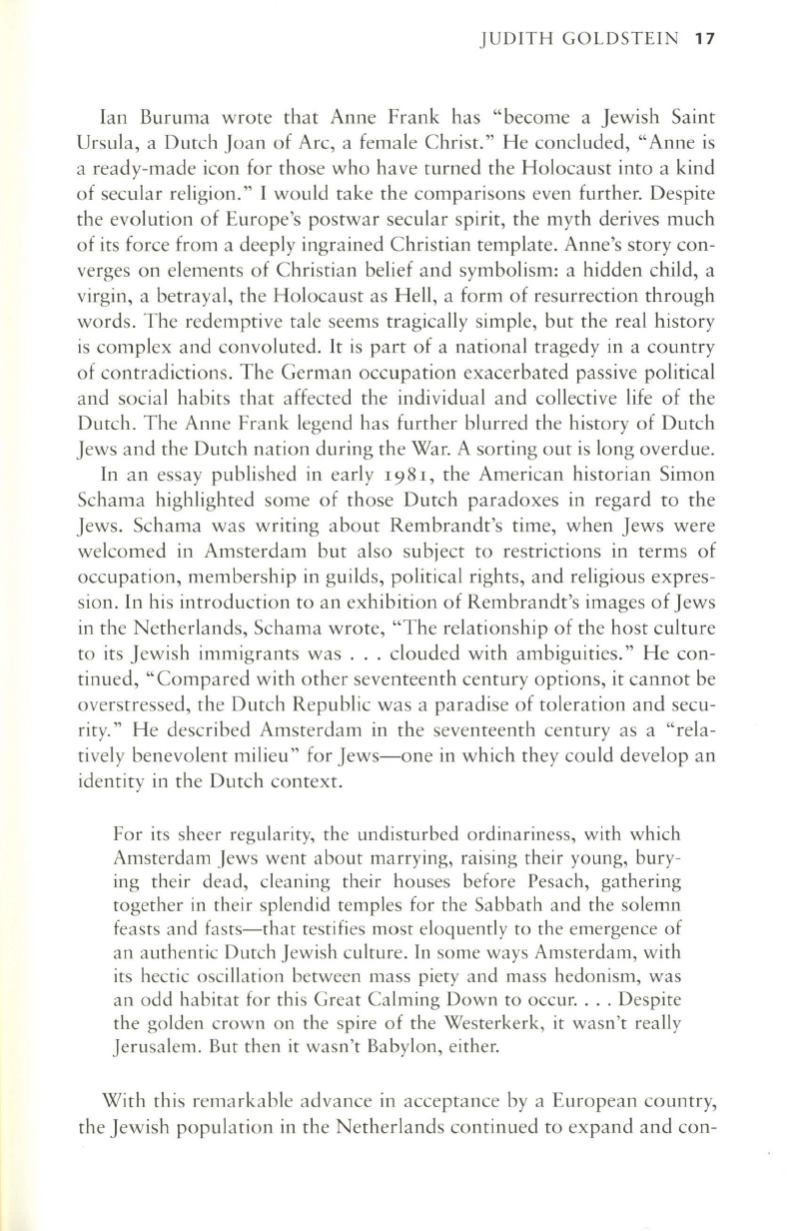
JUDITH GOLDSTEIN 17
Ian Buruma wrote that Anne Frank has "become a Jewish Saint
Ursula, a Dutch Joan of Arc, a female Christ." He concluded, "Anne is
a ready-made icon for those who have turned the Holocaust into a kind
of secular religion." I would take the comparisons even further. Despite
the evolution of Europe's postwar secular spirit, the myth derives much
of its force from a deeply ingrained Christian template. Anne's story con–
verges on elements of Christian belief and symbolism: a hidden child, a
virgin, a betrayal, the Holocaust as Hell, a form of resurrection through
words. The redemptive tale seems tragically simple, but the real history
is complex and convoluted.
It
is part of a national tragedy in a country
of contradictions. The German occupation exacerbated passive political
and social habits that affected the individual and collective life of the
Dutch. The Anne Frank legend has further blurred the history of Dutch
Jews and the Dutch nation during the War. A sorting out is long overdue.
In an essay published in early
1981,
the American historian Simon
Schama highlighted some of those Dutch paradoxes in regard to the
Jews. Schama was writing about Rembrandt's time, when Jews were
welcomed in Amsterdam but also subject to restrictions in terms of
occupation, membership in guilds, political rights, and religious expres–
sion. In his introduction to an exhibition of Rembrandt's images of Jews
in the Netherlands, Schama wrote, "The relationship of the host culture
to its Jewish immigrants was ... clouded with ambiguities." He con–
tinued, "Compared with other seventeenth century options, it cannot be
overstressed, the Dutch Republic was a paradise of toleration and secu–
rity." He described Amsterdam in the seventeenth century as a "rela–
tively benevolent milieu" for Jews-one in which they could develop an
identity in the Dutch context.
For its sheer regularity, the undisturbed ordinariness, with which
Amsterdam Jews went about marrying, raising their young, bury–
ing their dead, cleaning their houses before Pesach, gathering
together in their splendid temples for the Sabbath and the solemn
feasts and fasts-that testifies most eloquently to the emergence of
an authentic Dutch Jewish culture. In some ways Amsterdam, with
its hectic oscillation between mass piety and mass hedonism, was
an odd habitat for this Great Calming Down to occur.... Despite
the golden crown on the spire of the Westerkerk, it wasn't really
Jerusalem. But then it wasn't Babylon, either.
With this remarkable advance in acceptance by a European country,
the Jewish population in the Netherlands continued to expand and con-


